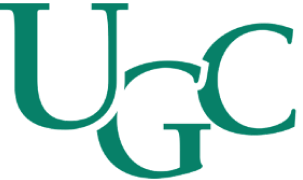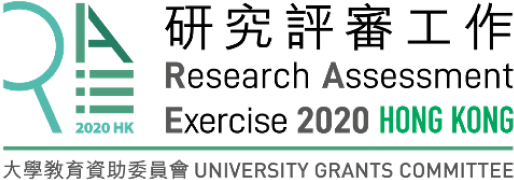Unit of Assessment:
Impact locations:
?Asia
Cambodia (3), Sri Lanka (2), Colombo (1), China (Mainland China) (1), Hong Kong, China (1), South Korea (1), Mongolia (1)
Case Study
Boosting Equal Access to Quality Education through Blended Learning
1. Summary of the impact
This research produced a framework for the integration of blended learning using information and communication technologies (ICT). It has been implemented in four local universities through the Blended & Online Learning & Teaching (BOLT) project to enhance student learning across different programmes, and in higher education institutions (HEIs) in Sri Lanka, Cambodia, Korea, Mongolia and China. Supported by EdUHK, UNESCO, the World Bank and the Asian Development Bank, the research increased the availability of equitable quality education by providing HEIs with a framework and self-assessment tool to analyse their current blended learning practices to boost students’ literacy and self-learning skills.
2. Underpinning research
Lim, Chair Professor of Learning Technologies and Innovation, has worked with blended learning experts and education specialists at UNESCO, the Asian Development Bank, the World Bank, the International Development Research Centre and partner universities worldwide. Lim’s framework for the effective adoption of ICT in education is based on two decades of research and knowledge transfer work with teachers, education leaders, and policymakers.
Far too often the enormous potential of combined technologies to enhance the learning process by providing access to marginalised communities has not been realised. Lim, who joined EdUHK in 2010, sought to address this issue by focusing research on the institutional drivers for effective use of ICT in education [R3, R6], supported by competitive local and international funding (i.e. Funding Scheme for Teaching and Learning, UGC #PolyU1/T&L/12-15 [R3-5], Australian Research Council [R1-2], and UNESCO Asia-Pacific [R6]).
By employing a sociocultural-historical perspective for mixed method case studies across different education settings and levels, the research revealed three key principles: (1) in ICT-enabled learning environments, teachers are key in organising activities for learning [R3, R4, R5]; (2) at the institutional or system level, a holistic approach has to be adopted by education leaders to drive and support ICT-enabled practices with the aim of improving access to quality education [R1, R6]; and (3) given the pivotal roles of teachers and institutions in ICT-enabled learning environments, the capacity of those institutions, education leaders and teachers has to be built on [R1, R6]. These key principles have generated more than 4,000 citations since 2001.
The three principles laid the groundwork for Lim’s applied research, including the development of a framework for institutions to adopt and integrate blended learning using ICT, particularly teacher education institutions where it enhanced pre-service teachers’ competency to use ICT in education. The framework, adopted by the Australian Council of Deans of Education for its A$8 million national project to integrate ICT competencies development into its pre-service teacher curriculum and teacher education institutions worldwide [R1], was redeveloped to focus on building the capacity of HEIs to drive, sustain, and scale up their blended learning practices. In 2015, supported by UNESCO, 17 leading international blended learning experts, led by Lim, adapted this framework to the unique sociocultural contexts of institutions by drawing upon promising practices and lessons learnt [R6]. The framework includes eight strategic dimensions: vision and philosophy; curriculum; professional learning; learning support; infrastructure, facilities, resources and support; policy and institutional structure; partnerships; and research and evaluation.
A self-assessment tool consisting of all eight dimensions was then developed for HEIs so they could conduct a needs and situation analysis of their existing state of blended learning [R6]. This allowed them to identify gaps and set targets for blended learning which better equipped them to formulate and implement strategies for sustaining and scaling blended learning in their programmes.
Given the pivotal role of teachers in the blended learning environment, professional learning is also a focus of Lim’s current projects in Cambodia, Sri Lanka, the Philippines, Indonesia and Hong Kong.
3. References to the research
[R1] Lim, C. P. (2012). Editorial 28(6): Preface to the Special issue - Building the ICT capacity of the next generation of teachers in Asia. Australasian Journal of Educational Technology, 28(6). https://doi.org/10.14742.ajet.803
[R2] Lim, C. P., Zhao, Y., Tondeur, J., Chai, C. S., & Tsai, C. C. (2013). Bridging the gap: Technology trends and use of technology in schools. Journal of Educational Technology & Society, 16(2), 59-68.
[R3] Yang, M., Tai, M., & Lim, C. P. (2016). The role of e-portfolios in supporting productive learning. British Journal of Educational Technology, 47(6), 1276-1286.
[R4] Lai, M., Lim, C. P., & Wang, L. X. (2016). Potential of digital teaching portfolios for establishing a professional learning community in higher education. Australasian Journal of Educational Technology, 32(2), 1-14.
[R5] Lai, M., Lam, K. M., & Lim, C. P. (2016). Design principles for the blend in blended learning: A collective case study. Teaching in Higher Education, 21(6), 716-729.
[R6] Lim, C. P. & Wang, T. C. (2016). A framework and self-assessment tool for building the capacity of higher education institutions for blended learning, In C. P., Lim, & L.B., Wang (Eds.), Blended Learning for Quality Higher Education: Selected Case Studies on Implementation from Asia-Pacific pp.1-38). France (Paris): UNESCO.
Research funding: Australian Research Council (2007 to 2011) for earlier research on digital forms of assessment in secondary schools [R1, R2]; UNESCO Asia-Pacific (Bangkok, Thailand; 2015/16, HK$426,000), for Building the Capacity of Higher Education Institutions in Asia-Pacific for Blended Learning to Enhance Student Engagement and Outcomes [R6]; the HEAD Foundation (Singapore) and International Development Research Centre (Canada; 2016/17, HK$530,000), for Building the Capacity of Cambodian Universities for Blended Learning to Enhance the Equity, Quality and Efficiency of Higher Education; University Grants Committee, Hong Kong (Grant No.: PolyU1/T&L/12-15, 2015-2016, HK$8.77 million) for the Blended & Online Learning & Teaching (BOLT) Project [R3, R4, R5]; and EdUHK (2016-2018, HK$5 million; 2018-2020, HK$7.43 million; 2019-2021, HK$8 million).
4. Details of the impact
Lim’s framework was used in 2015 as an analytical lens to examine and discuss how nine universities in Sri Lanka, Cambodia, Korea, Mongolia, and China drove and supported blended learning using its eight dimensions. The experiences of these universities were compiled into the book, Blended Learning for Quality Higher Education: Selected Case Studies on Implementation from Asia-Pacific, published and disseminated by UNESCO in 2016 [S1]. To date, over 3,000 copies have been distributed to all 46 UNESCO member states in the region, serving as a policy advocacy tool for educational ministries, policy organisations, and universities. With about 6,000 online views and more than 1,000 downloads, UNESCO has supported its third round of printing and distribution beyond Asia-Pacific. The late Dr Gwang-Jo Kim, Director of UNESCO (Asia-Pacific), described the book as a “valuable approach” to achieving the UN’s Sustainable Development Goal 4, Education 2030, for inclusive quality education [S1, xiii].
The framework was adopted by UNESCO (Asia-Pacific) for its ICT in the education project Seizing Digital Opportunities in Higher Education, funded by the Shenzhen Municipal Government (US$500,000). Working with the flagship Royal University of Phnom Penh (RUPP) in Cambodia and Colombo University in Sri Lanka, Lim facilitated the strategic planning for blended learning [S2, S3]. In 2016, RUPP adopted the framework to guide its senior management team as it revised ICT in its education masterplan. The revised plan impacted around 25,000 students. Mak Ngoy, the Director General of Higher Education, viewed this as a “vital piece of research that has proven effective in shaping how…to achieve blended learning practices in [HEIs] across Cambodia”, with Lim’s framework “[being] introduced to more than 30 institutions nationwide” [S4]. A similar masterplan was developed for Colombo University resulting from Lim’s involvement in 2017 [S3]. These two universities now act as Centres of Excellence and, with support from UNESCO and Lim, will be disseminating their practices and lessons learnt to other universities in their own countries to enhance access to quality education both in urban and rural areas.
Lim’s assessment tool [R6] has enabled partnerships between the national RUPP and the provincial universities of Syay Rieng and Battambang, with around 4,100 and 2,600 students, respectively. The tool allowed senior managers to identify opportunities for closing the urban-rural education quality gap and, together with Lim, they developed a strategic action plan to implement blended learning in a university course across the three universities [S5]. With professional development provided by Lim and his team, teachers saw how “the introduction of blended learning has allowed me to rethink what is possible and how the use of it can benefit my students” [S5]. They observed more active and personalised learning, noting “students now [having]…self-motivation for learning”, and not “having to explain to students from A to Z…in the materials they have used, [helping] them move forward” [S5].
The framework was also passed on by Professor Han Xibin of the Institute of Education, Tsinghua University, to more than 500 mainland Chinese partner HEIs [S6]. Notable impacts of this implementation include the significant satisfaction (90%) of the students enrolled in blended learning courses; overcoming student challenges like low literacy and low self-learning skills to achieve a 100% passing rate in a course after using blended learning; and recognition by the institution’s local government for excellence in teaching reform [S6]. Professor Lim Cheolil, President of the Korean Society for Educational Technology at the Seoul National University, has also adopted the framework for use by Korean universities. In an English writing course at the Seoul National University, a student thought “the best benefit of blended learning…was that I was able to learn something daily. The online café, available all the time, kept me learning” [S7].
Lim’s grassroots approach, via the UGC-funded Blended and Online Learning and Teaching (BOLT) project, has influenced student learning in Hong Kong. Since its inception at EdUHK in 2014, Lim’s co-leadership has expanded the project to collaborate with four other local universities. BOLT has enhanced student learning across numerous subjects. Recurring impactful themes among students include large improvements in motivation to learn and to participate in class activities [S8]. An instructor noted such learning approaches “[changed]…my ideas about qualitative research completely in such a way that I am a bit scared of liking this approach so much that I may take it very seriously in my research career” [S8]. Students also excelled academically; the use of blended learning resulted in twice as many students, from seven to 15, obtaining an A grade or higher in a human anatomy class [S8].
5. Sources to corroborate the impact
[S1] Han, X. B., Wang, Y. P., Li, B. F., & Cheng, J. G. (2016). Case study of institutional implementation of blended learning at five universities in China. In C. P. Lim & L. B. Wang (Eds.), Blended Learning for Quality Higher Education: Selected Case Studies on Implementation from Asia-Pacific (pp. 265-296). Paris, France: UNESCO.
[S2] Royal University of Phnom Penh Information and Technology Center. News: “Seizing Digital Opportunities in Higher Education”. Cambodia: Royal University of Phnom Penh. July 27, 2017.
[S3] University of Colombo, School of Computing. Workshop on “Seizing Digital Opportunities in Higher Education”, March 15 & 16, 2017.
[S4] Letter, Mak Ngoy. Director General of Higher Education, Ministry of Education, Youth and Sport, Cambodia. June 19, 2019.
[S5] Lim, C. P. (2019). Building the Capacity of Cambodian Universities for Blended Learning to Enhance the Equity, Quality, and Efficiency of Higher Education. Singapore: The HEAD Foundation.
[S6] Letter, Professors Cheng Jiangang and Han Xibin. Tsinghua University. June 2019.
[S7] Excerpt 88. Mijung Joyce Kim. PhD Dissertation, Graduate School, Seoul National University. August 2014.
[S8] BOLT stories. http://blearn.eduhk.hk/

